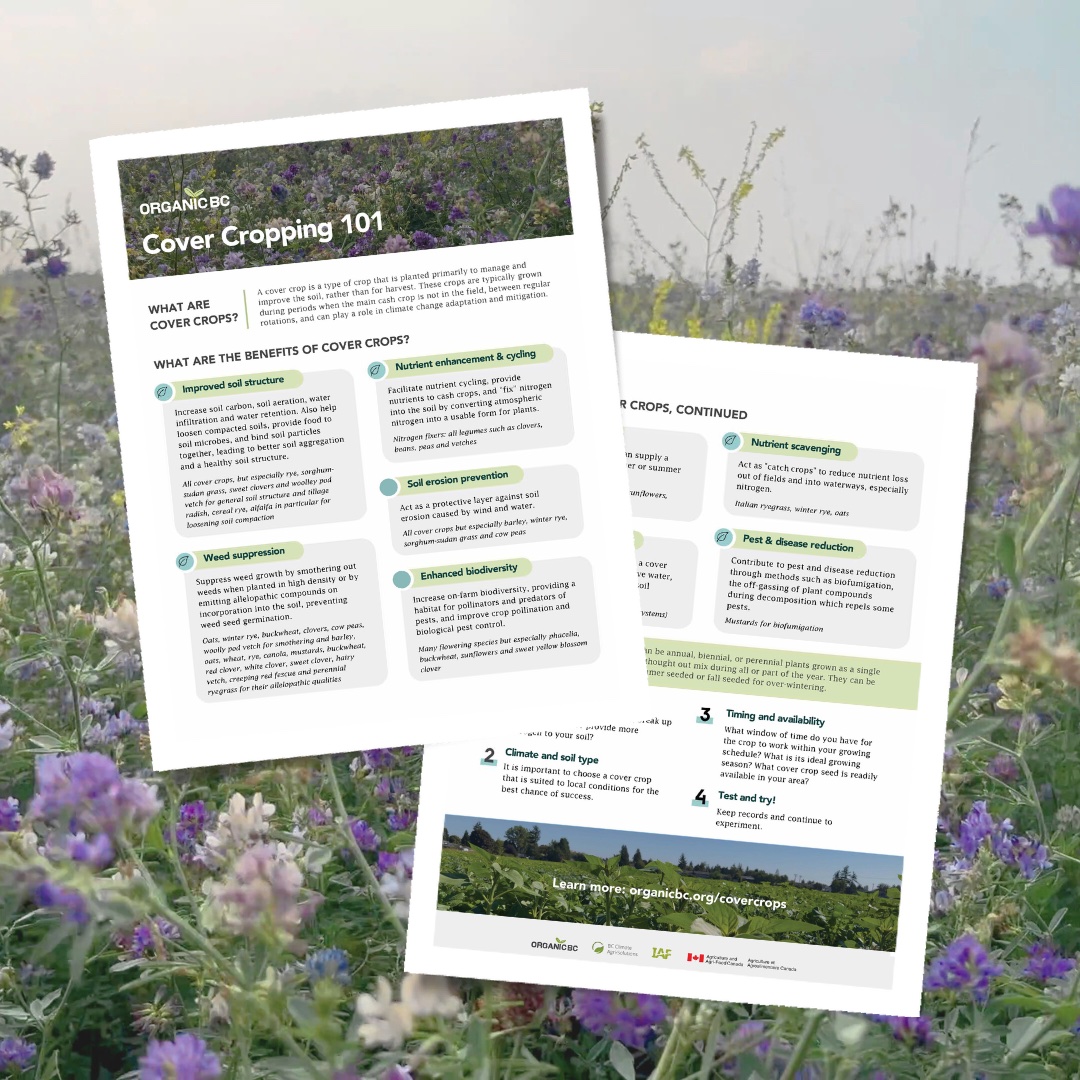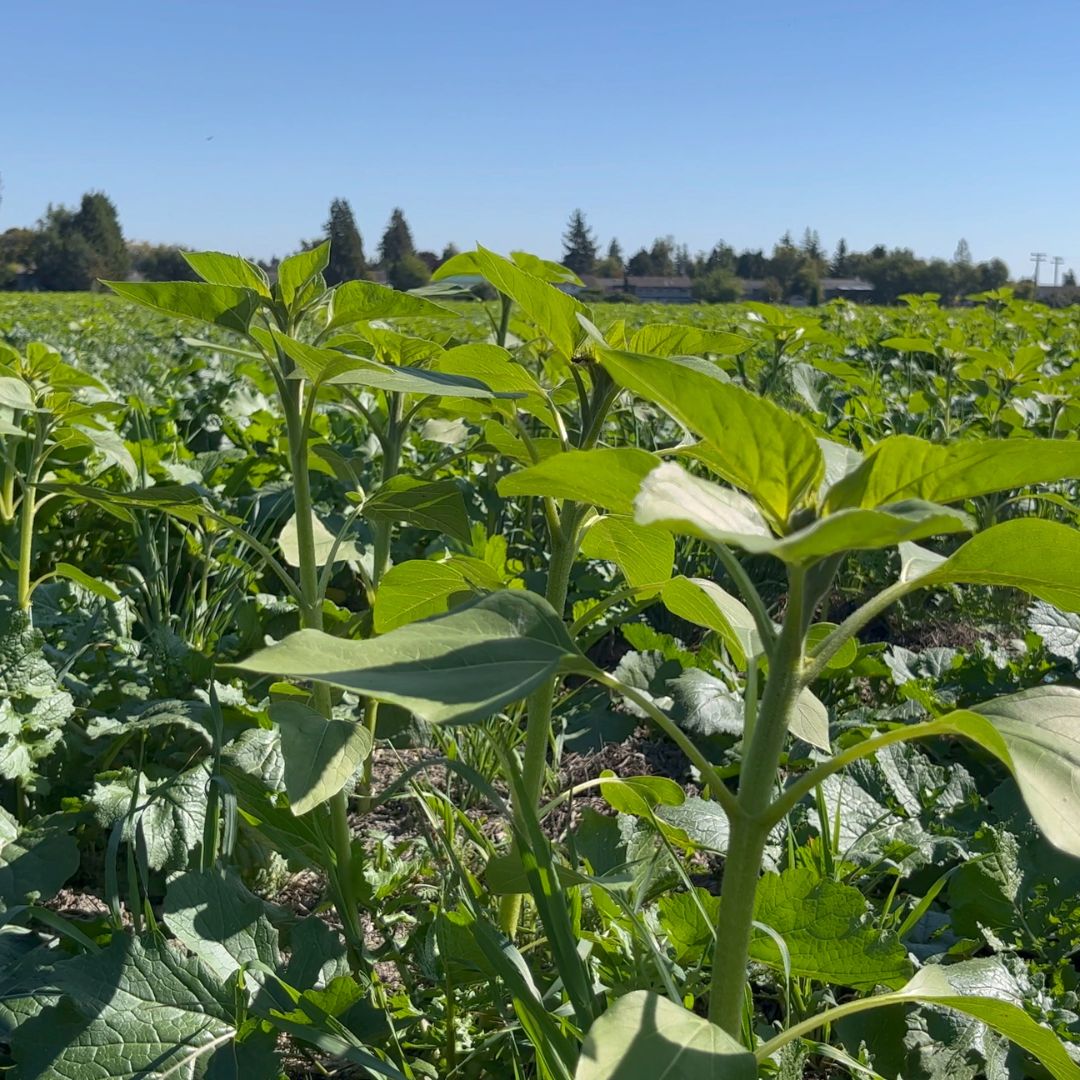What are cover crops?
A cover crop is a type of crop that is planted primarily to manage and improve the soil, rather than for harvest. These crops are typically grown during periods when the main cash crop is not in the field, between regular rotations, and can play a role in climate change adaptation and mitigation.
Cover Cropping 101
Download our Cover Cropping 101 guide to learn more about this beneficial soil management practice. Explore the benefits of cover cropping, plus tips on selecting the perfect cover crop.
Download now
What are the benefits of cover crops?
Improved soil structure
Increase soil carbon, soil aeration, water infiltration and water retention. Also help loosen compacted soils, provide food to soil microbes, and bind soil particles together, leading to better soil aggregation and a healthy soil structure.
All cover crops, but especially rye, sorghum-sudan grass, sweet clovers and woolly pod vetch for general soil structure and tillage, radish, cereal rye, alfalfa in particular for loosening soil compaction
Nutrient enhancement & cycling
Facilitate nutrient cycling, provide nutrients to cash crops, and “fix” nitrogen into the soil by converting atmospheric nitrogen into a usable form for plants.
Nitrogen fixers: all legumes such as clovers, beans, peas and vetches
Soil erosion prevention
Act as a protective layer against soil erosion caused by wind and water.
All cover crops but especially barley, winter rye, sorghum-sudan grass and cow peas
Weed suppression
Suppress weed growth by smothering out weeds when planted in high density or by emitting allelopathic compounds on incorporation into the soil, preventing weed seed germination.
Oats, winter rye, buckwheat, clovers, cow peas, woolly pod vetch for smothering and barley, oats, wheat, rye, canola, mustards, buckwheat, red clover, white clover, sweet clover, hairy vetch, creeping red fescue and perennial ryegrass for their allelopathic qualities
Enhanced biodiversity
Increase on-farm biodiversity, providing a habitat for pollinators and predators of pests, and improve crop pollination and biological pest control.
Many flowering species but especially phacelia, buckwheat, sunflowers and sweet yellow blossom clover
Grazing material
A carefully selected mix can supply a nutritionally balanced winter or summer feed for cattle.
A mix of clovers, cereals, peas, sunflowers, turnips and radish
Nutrient scavenging
Act as “catch crops” to reduce nutrient loss out of fields and into waterways, especially nitrogen.
Italian ryegrass, winter rye, oats
A living mulch
Planted in a growing cash crop, a cover crop can act as mulch to conserve water, build organic matter and boost soil structure.
Clovers, woolly thyme (in perennial systems)
Pest & disease reduction
Contribute to pest and disease reduction through methods such as biofumigation, the off-gassing of plant compounds during decomposition which repels some pests.
Mustards for biofumigation

Cover Cropping and Soil Health
Cover crops are an effective solution for managing optimal soil health, with long-term positive impacts on soil quality and soil conservation.
Learn More in the BC Organic GrowerSelecting a Cover Crop
Cover crops can be annual, biennial, or perennial plants grown as a single crop or a well thought out mix during all or part of the year. They can be spring and summer seeded or fall seeded for over-wintering.
1. Cover cropping goals
Do you want to smother weeds, break up soil compaction or provide more nitrogen to your soil?
2. Climate and soil type
It is important to choose a cover crop that is suited to local conditions for the best chance of success.
3. Timing and availability
What window of time do you have for the crop to work within your growing schedule? What is its ideal growing season? What cover crop seed is readily available in your area?
4. Test and try!
Keep records and continue to experiment.
Additional Resources
BC Cover Cropping Self-directed Course Bundle (Farm Resilience Mentorship Program – FaRM) – Learn all about cover cropping, at your own pace, and join a provincial network of farmers also learning and implementing cover crops on their farms. Free.
Cover Crops: A Secret Weapon For Healthy Soil? – Organic Science Canada
The More The Better? Multi-Species Vs Single-Species Cover Crops For Carrots – Organic Science Canada
Grazing Cover Crops: You Can Have Your Cover Crop And Eat It Too – Organic Science Canada
Annual Clovers Suitable for Organic Production System – BC Organic Grower

